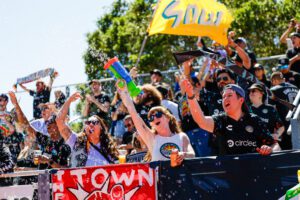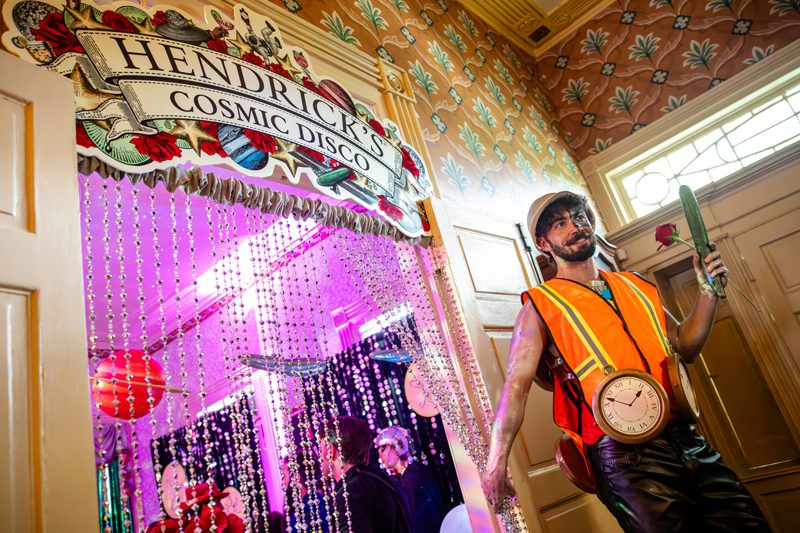The best marketing events create an experience in which consumers become so engaged that they drive the event’s momentum — and its success.
The challenge comes in finding the best ways to leverage these experiences and maximize their impact across a larger audience than the one in attendance. Successful events often require a wider marketing effort to sustain the momentum developed on the local level. Here’s a few thoughts on how to make that happen.
Pre-sell via e-mail
Part of this widened sphere is provided by the advertising — the “air coverage” — that pre-sells the events and drives awareness in local markets. The Internet has given event promoters a significant tool to help cut the costs associated with getting the word out. With a good e-mail list, event promoters can reach a regional market fairly easily and for a fraction of the cost of using street teams.
These efforts, however, are only useful during the event’s own time frame. The real question is, “How do you take all the positive attributes of an event and extend them to a much broader audience?”
Use the Web
The Internet, when used correctly, provides the answer, because it can serve as a tool for both engaging a much broader audience as well as for increasing results. From simple pictures to message boards, streaming video to live chats, the Internet provides an effective and exciting way for interested consumers to be reached outside the physical parameters of an event.
The trick is to find creative, unique and fun ways to leverage key components of the event online. For some events, this may be as simple as providing a live Webcast. For other, more sustainable programs, it may require much more planning and coordination between the event and Web teams.
Be there — almost
One question to ask is, “How do I help my customers feel like they really are part of an event, even when they’re not?”
In 1999, Pixelon hosted The Who in Concert in Las Vegas to promote its streaming video engine. A quick download of the company’s engine put those unable to attend right in front of the band; in summer 2000, M&M/Mars extended the reach of its “Midnight Mayhem” on-premise events by providing live Webcasts of nightclub concerts in four cities — simultaneously.
The answer will be slightly different for each marketer. The more unique the physical experience, the larger the audience that can be attracted to an online component. (Remember the server-disabling traffic earned by the Victoria’s Secret Fashion Show in 1999?)
Sample products — sort of
Streaming broadcasts and backstage chats are great. But truth be told, most events are about product demonstration or sampling. But the Internet can help here, too.
To launch UltimateTV, Microsoft used targeted e-mails containing product demos featuring Flash Animation. This component was used to support a mobile tour that was visiting retail locations and high-traffic areas; When ExxonMobil’s Speedpass tested in some McDonald’s restaurants last year, field marketers gathered e-mail addresses at drive-thru windows to keep the communication going electronically later on.
Buy smart media
That leads to the next question: “How do you get people interested who not only weren’t at the event, but don’t even live in the geographic area you’re targeting?” The answer is simple: smart promotional media buying and planning.
The keys are finding a compelling hook that will drive the audience, then identifying the right mix of targeted media to reach the eyeballs you want. Perhaps you’d be willing (if the budget allows) to fly some opinion leaders from the other regions to the events.
If not, make sure the message is compelling enough to make it simply a matter of getting the word out in the other regions. For Midnight Mayhem, street teams and print collateral advertised events by communicating only the event date and Web address; the nebulous message was the creative hook. I can’t stress enough the value of a promotionally focused media planner that can combine the power of local-market print and radio buys with guerrilla tactics, regionally focused e-mail newsletters, and other forms of local media (both online and traditional).
Measure success
The final component to a successful program is to set the metrics of success — so you know whether or not you’ve hit your mark. Depending on what the event’s objectives are, you may find that an online component not only attracts a larger audience, but may be able to move consumers through the sales cycle further and faster.
In other words, don’t just leverage the assets created at the event, but take full advantage of the things you can do online that can’t be accomplished logistically at the event.
Bill Carmody is chief marketing officer of Seismicom, San Francisco. Reach him at bill@seismicom.com.

 Network
Network

